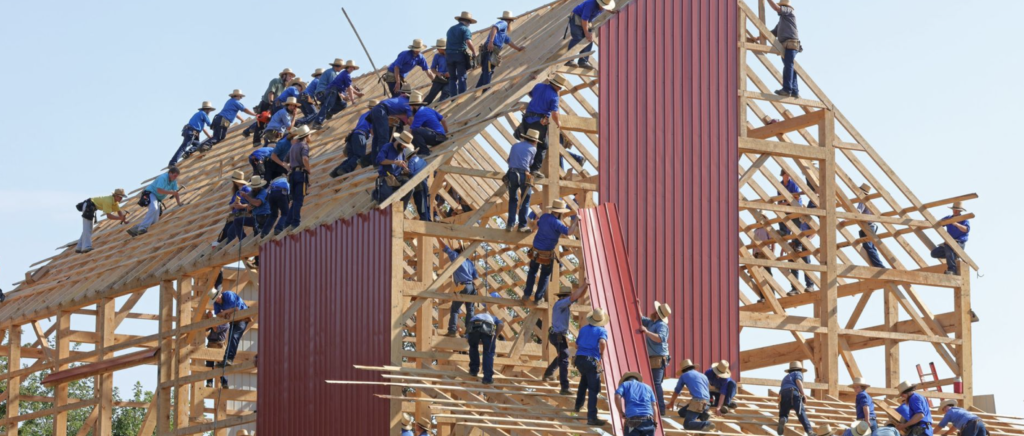I often dream about managing a major league baseball team. While I imagine the job would be more difficult than most baseball fans think, I’d enjoy the rhythm of the baseball season. Think about some of the advantages: clear definition around who wins and who loses, the games have a definitive end to them, so do the seasons, and the players all work towards the same result. Baseball purists may argue that team chemistry is important, and assuredly it is, but managers never deal with players questioning what other players are doing (although they may question their contribution level). For example, the first-basemen isn’t wondering what job the centerfielder is doing out in the outfield. Not only is it clear that he is playing centerfield, it is also clear that the first baseman needs the centerfielder to play their position so that the team can get three outs and get back to hitting. Interdependency is a given in baseball, as it is most other sports.
Is interdependency a given in our organizations?
Given the volume written on corporate culture and teamwork, it obviously is not. Silos, for one, are a symptom of an organization that is not working interdependently They’re an indicator that group A does not trust group B, and may be even suspicious of them. “We are better off doing this ourselves,” is a common phrase for this team. “They don’t get things done on time.” Or, “we are always waiting on that department. If they delivered on time, we’d really be rocking.”
To be clear, I am speaking from experience. I have heard those things said at Hoffer Plastics, and it always irritates me. It irritates me because we have really good people on our team. People who work their tails off. So, this shouldn’t be a problem.
Given that it sometimes is, here are two actions leaders can take to help resolve this issue.
First, leaders need to push decision making downward throughout the organization. Craig Groeschel made this point at the 2018 Global Leadership Summit while discussing necessary leadership qualities, and his point resonated with me because our manufacturing culture has historically been built on the “expertise” of the few. In fact, there is a list of “first names” everyone recognizes – a characteristic of an “expert” culture. To be clear, there are many positives to the “expert” culture – problem-solving, accountability, and performance (you can’t be an “expert” if you don’t perform after all!), and it has worked well for us at times.
Like anything, however, there are problems with it. For one, it eventually places a lid on future growth. For if you are relying on a few “experts,” you can only take on so much. It also creates a lack of interdependency. This happens when groups, even teams, wait to hear what the “expert” has to say about a matter or issue. The organization can even wind to a halt as it waits for the “expert” to save the day, or simply fix the problem. God forbid if the “expert” goes on vacation. Who allowed that! The point here is that when the team is waiting, the organization is not moving forward.
Ironically, pushing decision making downward in the organization actually creates more experts. In fact, I’m dying for the day when the famous list is so long nobody can remember the names on it! It is a sign that we have created a culture of “doers,” or a culture of people making decisions and taking action. Once they do this, they naturally realize their need of help from other people. Thus, they become interdependent out of necessity, which is always better than the leader telling them that they should become interdependent.
The second idea, and something leaders should be talking about, is the organization’s focus. Leaders need to reset the organization’s focus on “out there” in the customer’s hands and on the store shelves as opposed to the issues “in here.” Before explaining this point, I want to clarify that I do believe it is the c-level’s job to “work on the business.” Hence, this necessitates that we spend a lot of time thinking about, and even talking about, what is happening “in here.” That said, the point here is that the leaders need to set the vision so that our team focuses primarily on “out there.” One way to do this is to always tie the internal discussion back to “out there.” For example, remind everyone that our new ERP system matters most in how it helps us deliver parts to customers on time “out there.” All the things it does “in here,” are just bonuses. We need to continually voice this so that our team’s focus is always on the customer first. Period.
In the context of interdependency, an “out there” focus helps align different business segments on what matters (serving the customer), and helps them work interdependently to that end, rather than working independently on whatever their department deems important. See the difference? My experience has been that the more we focus on serving customer needs, the more interconnected we become as a company. It is the ultimate rally-cry! In fact, our best successes, often painfully accomplished, are collectively remembered by the customer’s name, and the team that helped solve the customer’s problem, rather than by the names of a few “experts.”
In the divisive world we live in, interdependency will separate the good teams from the bad ones. Creating an atmosphere of “we are in this together” so that we can help serve those “out there,” is the job of leadership.

